Discover the Best Board Games for Every Player
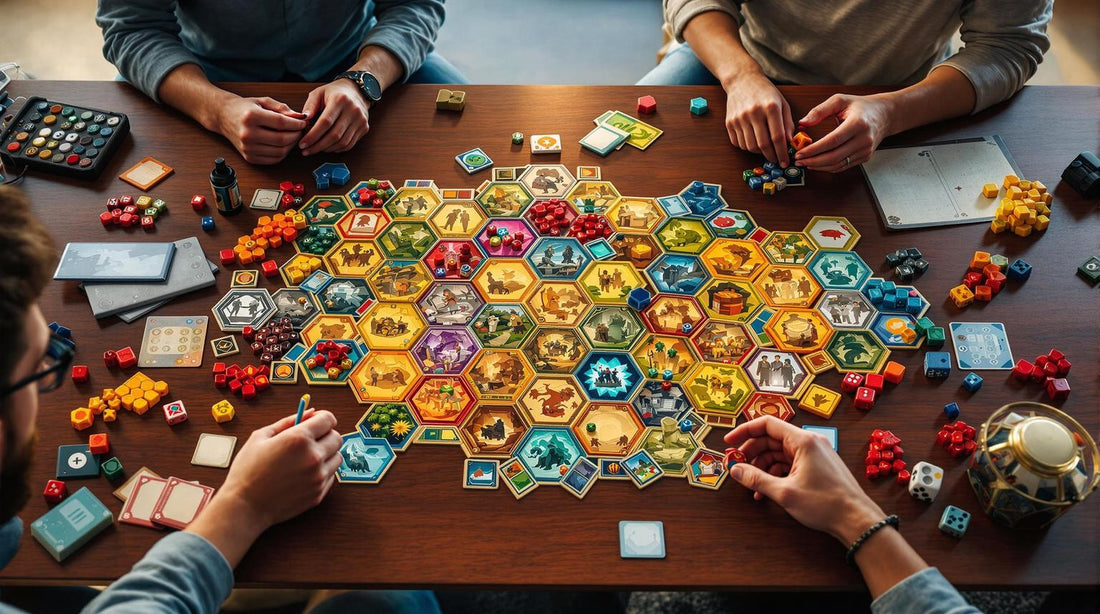
Top 7 Games with Resource Management Mechanics
Looking for the best resource management games? Here's a quick guide to seven standout titles that challenge you to balance limited resources, plan strategically, and outsmart opponents. From trading in Catan to building engines in Terraforming Mars, these games offer unique mechanics and endless replayability.
The Top 7:
- Voidfall: Galactic conquest with tough resource allocation decisions.
- Root: Asymmetric factions with distinct resource systems.
- Terraforming Mars: Manage six resources to terraform a planet.
- Scythe: Engine-building with area control and diverse resources.
- Catan: Classic trading and dice-driven resource production.
- Everdell: Seasonal worker placement and resource conversion.
- [Entry Removed]: Placeholder for another great game.
Each game blends strategy, competition, and creativity, offering something for players of all skill levels. Ready to dive deeper into what makes these games special? Keep reading for detailed insights and tips to master resource management in your favorite titles.
Terraforming Mars Board Game Review
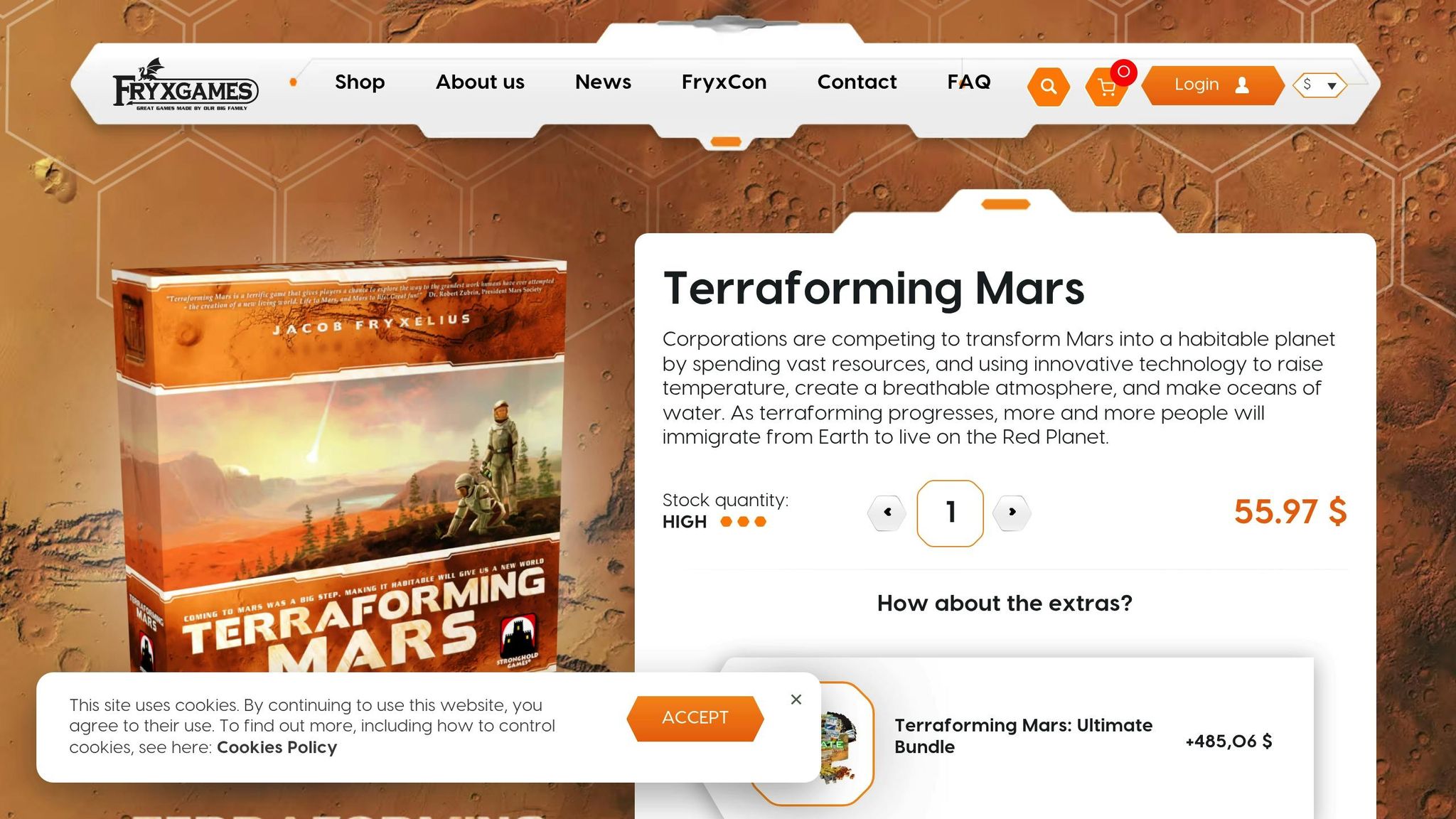
How We Chose These Games
To pick the best resource management games, we carefully analyzed several factors to ensure each title provides engaging gameplay and lasting enjoyment. Our approach focused on three main aspects that define a game's quality and appeal. These criteria highlight strategic resource management while keeping the games accessible and fun to revisit.
Game Difficulty Levels
We looked for games with solid resource management mechanics that grow more strategic over time, avoiding systems that are overly complicated or hard to follow. Based on data from BoardGameGeek, the average complexity rating for top resource management games is 3.27 out of 5. This shows that players generally prefer games with a moderate level of challenge.
Number of Players
The majority of highly-rated games are designed for 2-4 players, with about 18% accommodating groups of 5 or more. Games for smaller groups often focus on intense resource competition, while those for larger groups include mechanics to balance resources across more players, ensuring fair gameplay.
Long-term Entertainment
Replayability is key, and we evaluated it by looking at features like:
- Different setup options for variety
- Strategic complexity that keeps players engaged
- Availability of expansions to extend the experience
- Active player communities that share and refine strategies
These elements help ensure the games remain interesting even after multiple playthroughs.
7 Best Resource Management Games
Here’s a rundown of seven standout resource management games that shine through their strategic depth and replay potential.
1. Voidfall
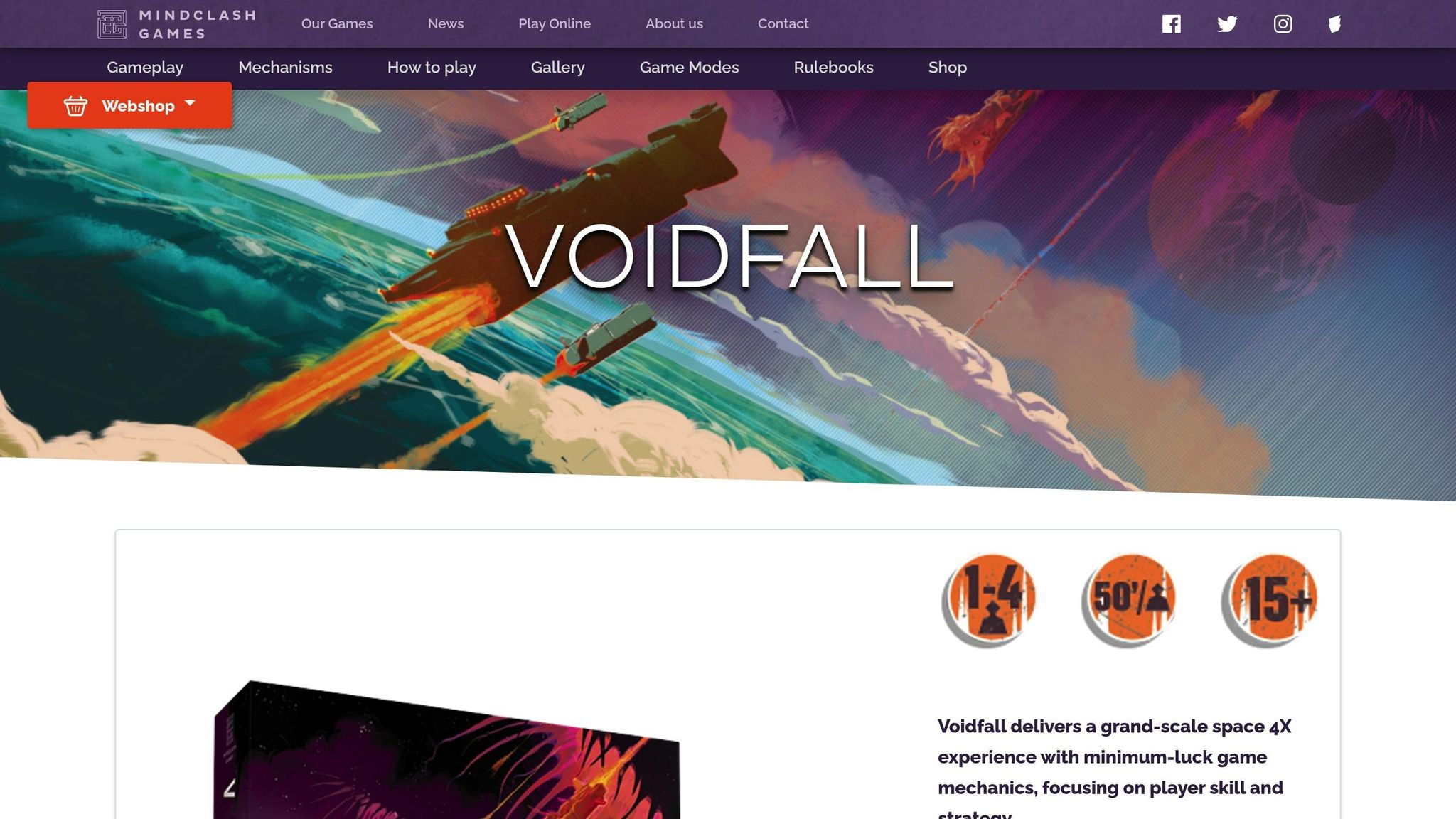
This game centers around a pivotal 'Sustainment Phase,' where players allocate resources to balance immediate needs and long-term goals. Energy, materials, and influence must be carefully managed to tackle unexpected events, making every decision feel impactful.
2. Root: A Game of Woodland Might and Right
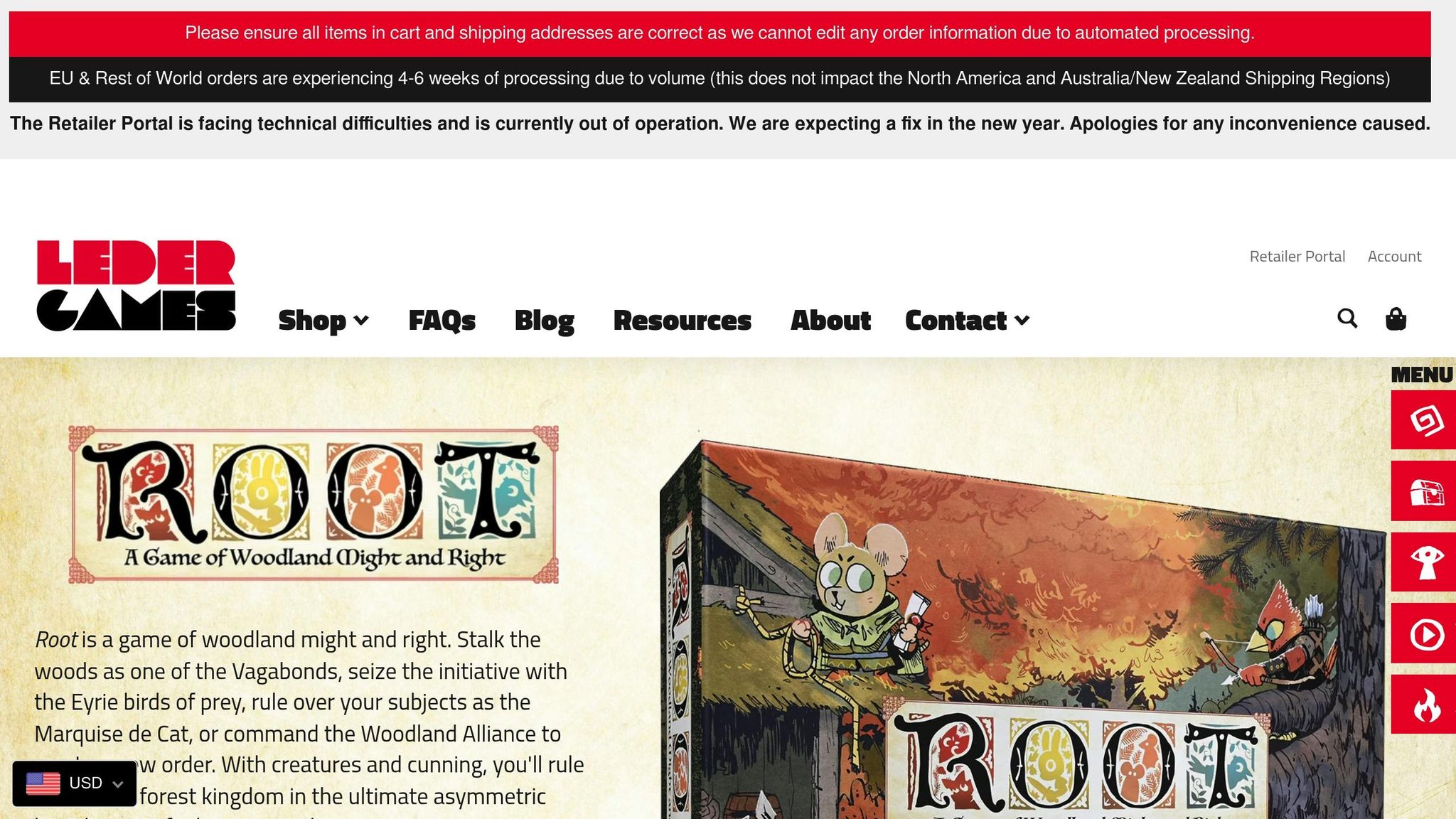
Root introduces asymmetric gameplay with each faction managing resources differently. Cats gather wood, Eyries handle decree cards, and the Vagabond collects items. This variety leads to engaging player interactions and forces you to adapt based on your chosen faction.
3. Terraforming Mars
In Terraforming Mars, players juggle six key resources: MegaCredits, Steel, Titanium, Plants, Energy, and Heat. Success hinges on balancing short-term actions with long-term strategies using project cards. With an 8.4/10 rating on BoardGameGeek and over 100,000 ratings, it’s a fan favorite.
4. Scythe
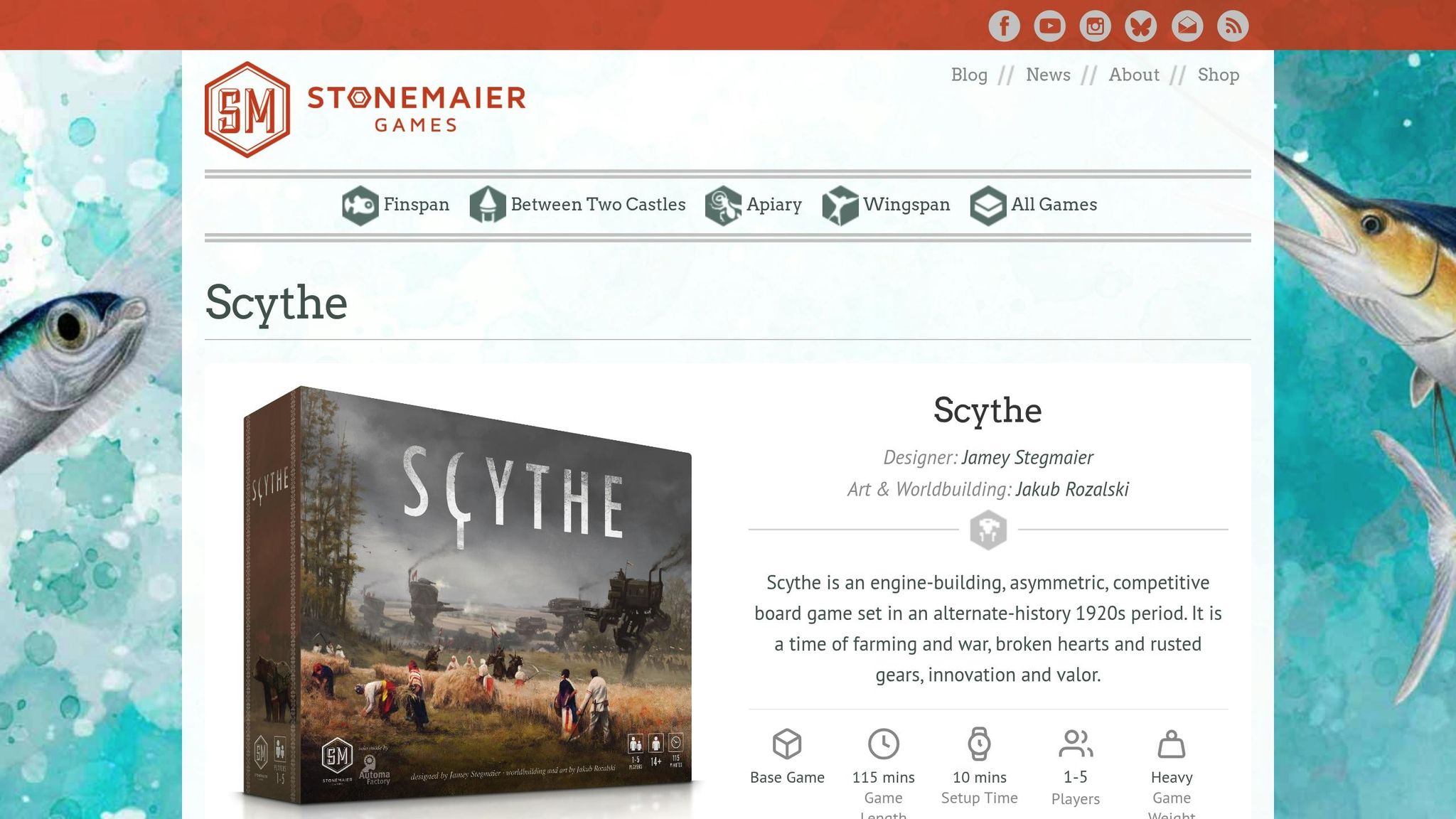
Scythe combines resource management, area control, and engine building. Players manage metal, oil, food, and wood, along with coins and power. The action selection system prevents repeating the same action consecutively, pushing you to plan ahead and stay flexible.
5. Catan
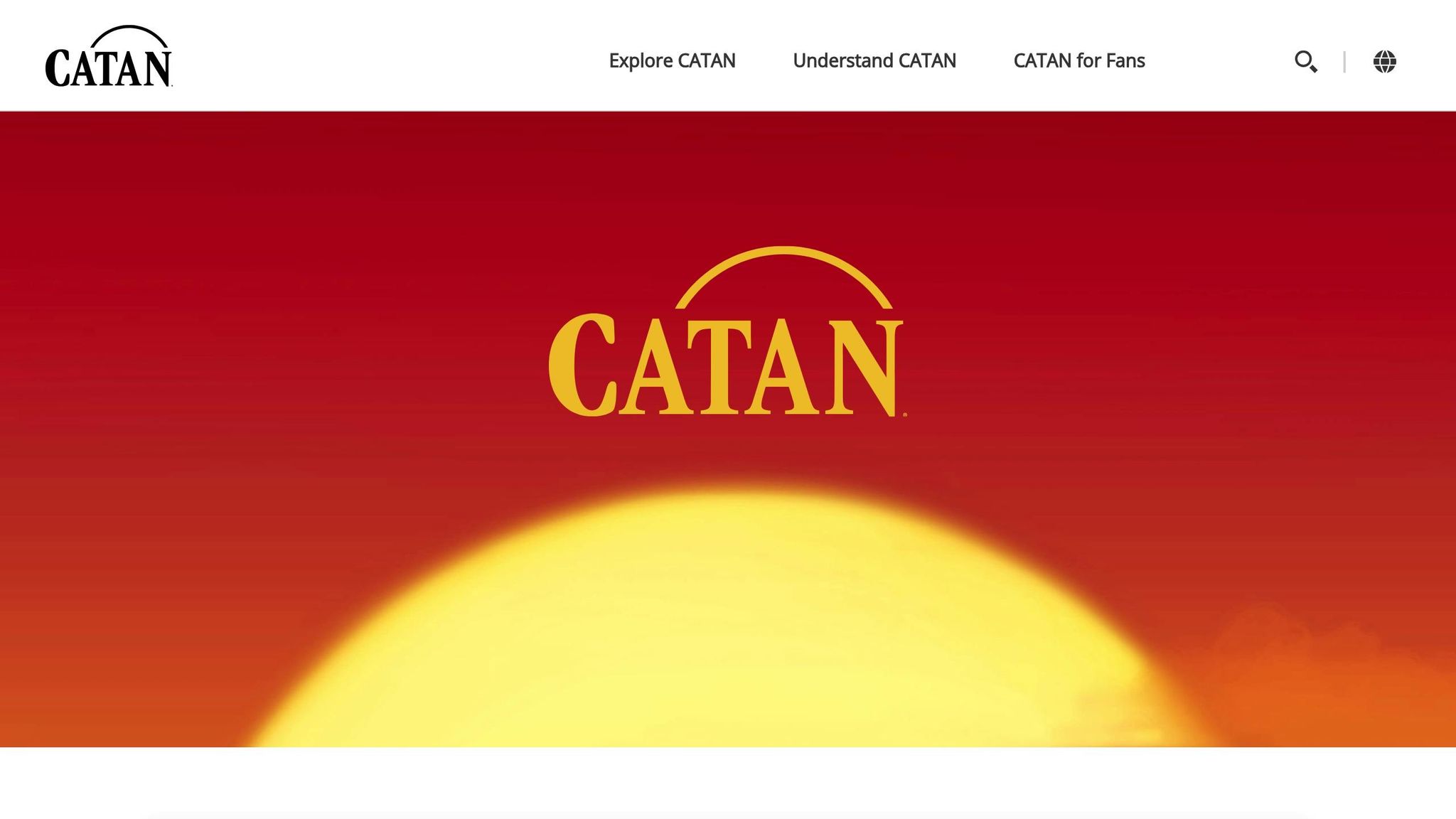
Catan’s resource system revolves around wood, brick, ore, grain, and wool. The combination of dice-based production and trading keeps the game dynamic, encouraging negotiation and collaboration among players.
6. Everdell
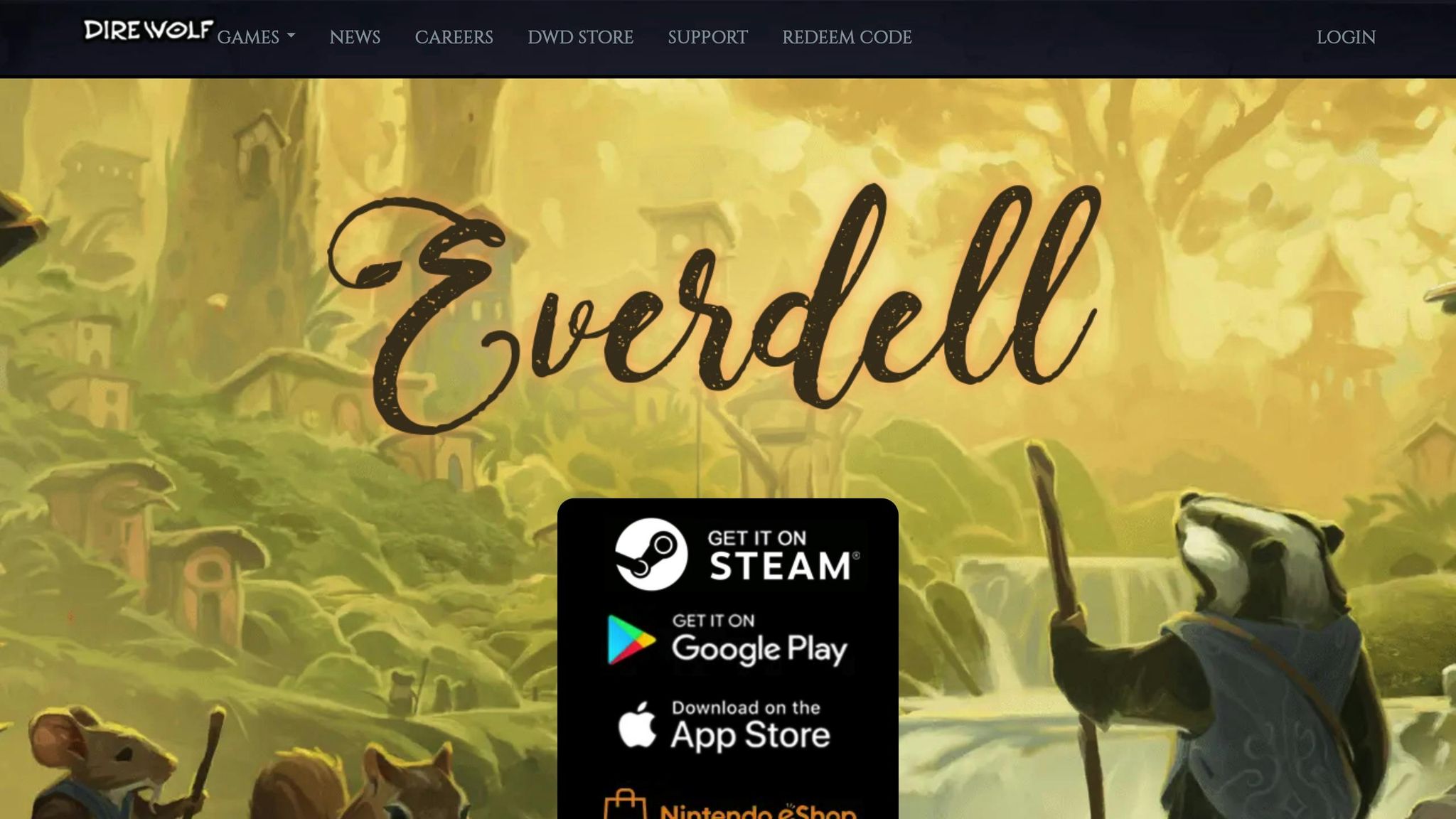
Everdell uses a seasonal cycle to challenge players to time their resource collection and city-building actions. Resources like twigs, resin, pebbles, and berries are used to create a tableau, and the seasonal mechanics add a layer of urgency to every decision.
7. [Entry Removed]
Find these games at Brain-Games.com with international shipping options.
sbb-itb-1ed942f
Tips for Better Resource Management
Use these strategies to get the most out of your resources in any resource-driven game:
Short-term vs. Long-term Decisions
Managing resources often comes down to balancing immediate needs with future opportunities. In engine-building games, focusing on consistent resource production instead of one-time rewards can give you an edge that grows over time.
Here are two important factors to keep in mind:
- Investment Timing: Spending early on resource-generating abilities often pays off more in the long run, giving you a lead that compounds as the game progresses.
- Opportunity Cost: Every resource you use means giving up another potential move. Weigh the immediate benefits against what you might gain later.
Closing the Gap When Behind
Falling behind doesn’t mean you’re out of the game. Smart resource management can help you catch up. Try these strategies:
- High-Efficiency Actions: Focus on moves that give you multiple benefits at once.
- Resource Diversification: Build alternative sources for crucial materials to avoid bottlenecks.
- Tactical Blocking: Prevent opponents from accessing key resources when possible.
Keep an eye on how others are managing their resources. Spotting when an opponent is running low can help you time your moves for maximum impact.
Though these tips work for most games, always adjust to the specific mechanics of the game you’re playing - whether it’s managing crises in Voidfall or tackling the puzzle-like challenges in Brain Games: The Game. Don’t let resources pile up - use them wisely and adapt as the game evolves.
Why Players Love Resource Management Games
Resource management games go beyond strategy - they tap into the psychological thrill of balancing limited resources. Players are challenged to juggle immediate needs with long-term goals, creating a puzzle that rewards careful planning and smart decisions.
What makes these games so engaging? They activate multiple cognitive skills at once. Players feel a sense of control as they turn resources into victory points or expand their influence within the game. The mix of instant rewards from clever trades and delayed payoffs from long-term strategies keeps players hooked. It's a satisfying loop of risk and reward that mirrors real-world decision-making.
These games attract a wide range of players: strategists who love intricate planning, social gamers who enjoy negotiation, achievers chasing clear goals, and explorers testing new approaches. This variety ensures the genre offers something for everyone, making it perfect for those seeking deep, long-lasting entertainment.
Themes play a big role in drawing players in. Whether you're building settlements or terraforming planets, the storyline makes the mechanics feel natural and immersive. This narrative touch turns abstract decisions into memorable moments, making players feel deeply connected to their growing empires.
New mechanics like asymmetric powers and dynamic markets bring fresh challenges. These additions add layers of strategy without making the games overly complex, helping the genre stay popular with a broad audience.
Multiplayer modes add another layer of excitement. A 2024 survey found that 78% of fans value strategic depth in these games. Whether it's a casual family game night or a high-stakes tournament, resource management games create shared experiences filled with triumphs and tense decisions that appeal to players of all skill levels.
FAQs
What game is considered a resource management game?
A resource management game challenges players to gather, allocate, and spend limited resources strategically to meet objectives. The seven games mentioned earlier showcase this through different mechanics, from the trade-driven economy of Catan to the crisis management in Voidfall.
Here are some common resource types:
- Physical: Materials like wood or ore
- Abstract: Elements such as actions or influence
- Multi-purpose: Items like cards that can serve as currency
Catan stands out for introducing these ideas in a simple way, making it easy for new players to grasp. More modern games often include:
- Systems tailored to specific factions
- Action economies tied to time or other constraints
Board games often use physical pieces to make resource tracking clear and intuitive.
Want to get better at these games? Focus on:
- Understanding the victory conditions early
- Spending resources wisely instead of hoarding
- Building multiple ways to generate resources






